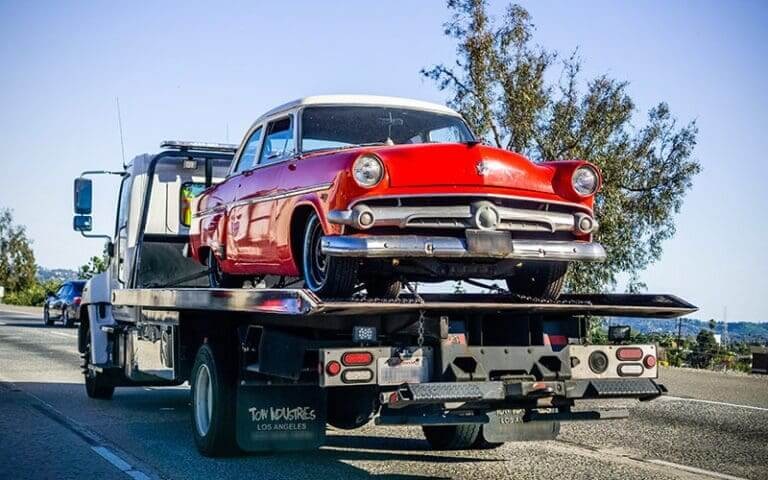Shipping your classic car can be a nerve-wracking experience, especially if it holds sentimental or monetary value. It takes thoughtful planning and research to entrust an auto shipping service with your beloved automobile. There are a few important things you should be aware of in advance to guarantee a seamless and stress-free shipping experience. From selecting the right transporter to understanding insurance coverage, here are seven essential things every classic car owner should be aware of before shipping their prized possession.
1. Research Reliable Auto Transport Services:
Not all automobile shipping companies are the same when it comes to moving antique cars. Do considerable research to find trustworthy companies with plenty of expertise in this field. Look for companies that specialize in the transportation of vintage cars since they have the know-how and tools required to treat your automobile with care. Narrowing down the options and selecting a dependable transporter can be made easier by reading internet reviews and asking other vehicle lovers for tips.
It is crucial to protect the integrity and safety of your classic automobile during transportation; therefore, don’t be afraid to ask about the carrier’s safety protocols and reputation.
2. Understand Insurance Coverage:
It’s important to know what insurance coverage an auto shipping company offers before entrusting them with your antique automobile. Although trustworthy carriers usually provide insurance for cars being transported, the scope of coverage may differ. To guarantee your classic car has enough protection, familiarize yourself with the conditions and restrictions of the insurance policy.
In the unfortunate event of damage or loss during transport, knowing your rights and the insurance claim process can help alleviate stress and expedite resolution. Some transporters may offer additional insurance options for high-value vehicles like classic cars, providing added peace of mind for owners.
3. Prepare Your Classic Car for Transport:
Getting your classic automobile ready for transportation can help reduce damage and guarantee a seamless delivery experience. Start by giving the car a thorough cleaning on the inside and outside. For reference, take pictures or videos of any damage that is already there. Remove valuables and personal items from the vehicle to avoid damage or loss while traveling.
The next step is to fasten any detachable or loose components so they don’t get lost or damaged while in transit. To reduce the possibility of leaks or accidents, consider unplugging the battery and emptying the gasoline tank. Finally, make sure the classic car is in good working condition, with properly inflated tires and functioning brakes.
4. Choose the Right Transport Method:
When transporting your classic automobile, you can choose between open and enclosed transport trailers. Although open trailers are less expensive, the car is left vulnerable to the weather and possible road debris. On the other hand, enclosed trailers provide better protection against weather, dust, and debris, making them the perfect choice for priceless antique automobiles.
While choosing the best mode of transportation, consider the weather, the distance, and the worth of your vintage vehicle. Even though enclosed transportation might be more expensive, the extra protection and peace of mind are often worth it, particularly for valuable antique cars.
5. Review and Sign the Contract:
Read the contract offered by the auto shipping service attentively and sign it before completing the transportation of your antique automobile. The terms and conditions should be carefully read, taking note of the payment information, cancellation procedures, and pickup and delivery dates. To prevent future misunderstandings or problems, make sure that the carrier documents all of their commitments and obligations in writing. Do not hesitate to ask the auto transport service for clarification if you have any questions or issues about the contract.
6. Confirm Pickup and Delivery Details:
To guarantee a seamless and timely operation, verify pickup and delivery specifics with the vehicle transport service as the shipment date draws near. Provide accurate addresses for both locations and discuss any specific instructions or requirements for loading and unloading the classic car. Work together with the transporter to create a timetable that works for your availability and tastes.
When the car is picked up, check it out and record its condition before putting it on the transport trailer. Additionally, upon delivery, thoroughly examine the classic vehicle and record any anomalies or damage for insurance purposes.
7. Stay Informed and Communicate:
Keep the vehicle transport service informed and in constant contact throughout the shipment procedure. Check in frequently to get updates on the condition of your vintage automobile and take quick care of any problems. A trustworthy carrier will keep you updated at every stage and handle any queries or problems in a timely and competent manner. By being proactive and involved, you can ensure that the shipping procedure goes well and that you have peace of mind knowing that your vintage automobile is in good hands.
Conclusion
In conclusion, shipping your classic car requires careful planning, research, and preparation to ensure a smooth and successful experience. Through an in-depth understanding of these seven crucial elements and adherence to recommended procedures for classic automobile transportation, you can protect your valuable asset and experience tranquility throughout the whole shipping procedure. Trusting your classic car to a reputable auto transport service with expertise in vintage vehicle shipping is the key to a stress-free and secure transportation experience.




